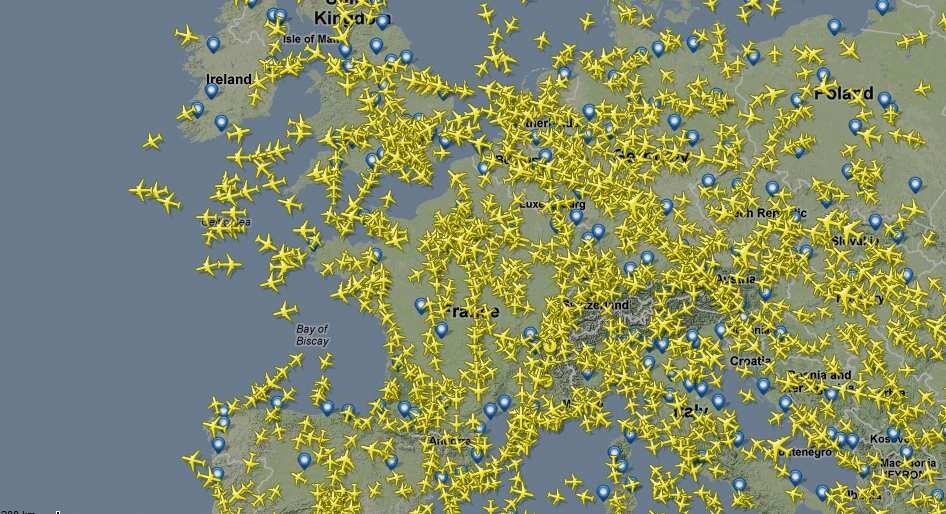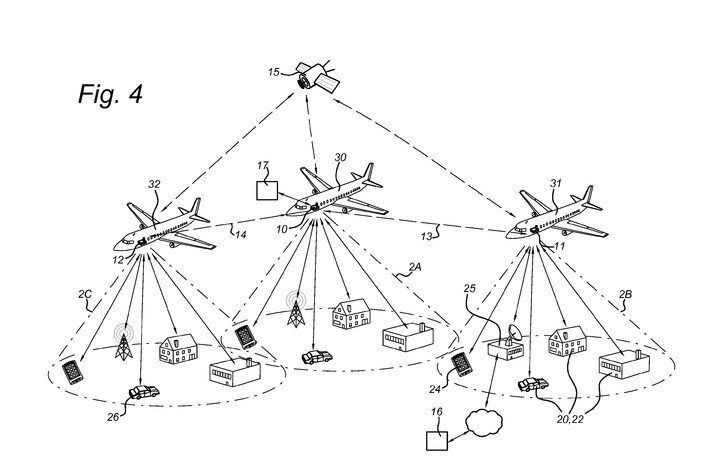Commercial aviation platform for Earth observation applications
| 651 - Abstract: |
| The present invention is related to a method and system for creating a constellation of electronic devices for providing optical or radio-frequency operations relating to Earth surface data collection applications on a predetermined geographical area. This constellation is created by means of several airplanes carrying payloads, which have a flight path over the geographical area to be covered. |
Description:
The present invention intends to provide a flexible and versatile system and method obtaining data relating to a certain geographical area, which is easier to implement and more flexible to operate than current satellite based systems.
For this purpose, it is proposed to use commercial aviation planes as platforms to carry Smallsats-like payloads as they are well suited to host such payloads, providing stable environment and power supply. In fact, payloads of the order of 10- 20Kg mass would be perfectly compatible for installation on planes.

A key question to be addressed is the coverage that can be offered by commercial planes as platforms.
There is a dense network of commercial aircraft flying over land and seas, in particular over Europe, USA and SE Asia. On a typical day, there are about 30.000 flights across European airspace.
For the typical on route altitude of commercial planes, the coverage below the plane results in a circle of about 450Km diameter. A plane flying over Brussels could ‘cover’ all Belgium, while a plane flying over Utrecht would cover all the Netherlands.
Taking into account the frequency and large number of flights and routes, in particular over continental and transoceanic routes, commercial aviation may provide the basis for a wide range of applications.
Innovations and advantages:
- No launch costs and no dependency on the launch availability.
- Simpler payloads and less harsh environment as compared to space.
- Longer lifetime and maintenance possibility expected to reduce both CAPEX and OPEX costs.
- No debris issues as the system does not use space orbits.
Domain of application:
This invention could be used for optical or radio-frequency operations relating to earth surface data collection applications on a predetermined geographical area, such as for example for forest fire detection. Other commercial applications may also be envisaged.















 Germany
Germany
 Austria
Austria
 Belgium
Belgium
 Denmark
Denmark
 Spain
Spain
 Estonia
Estonia
 Finland
Finland
 France
France
 Greece
Greece
 Hungary
Hungary
 Ireland
Ireland
 Italy
Italy
 Luxembourg
Luxembourg
 Norway
Norway
 The Netherlands
The Netherlands
 Poland
Poland
 Portugal
Portugal
 Czechia
Czechia
 Romania
Romania
 United Kingdom
United Kingdom
 Slovenia
Slovenia
 Sweden
Sweden
 Switzerland
Switzerland

























